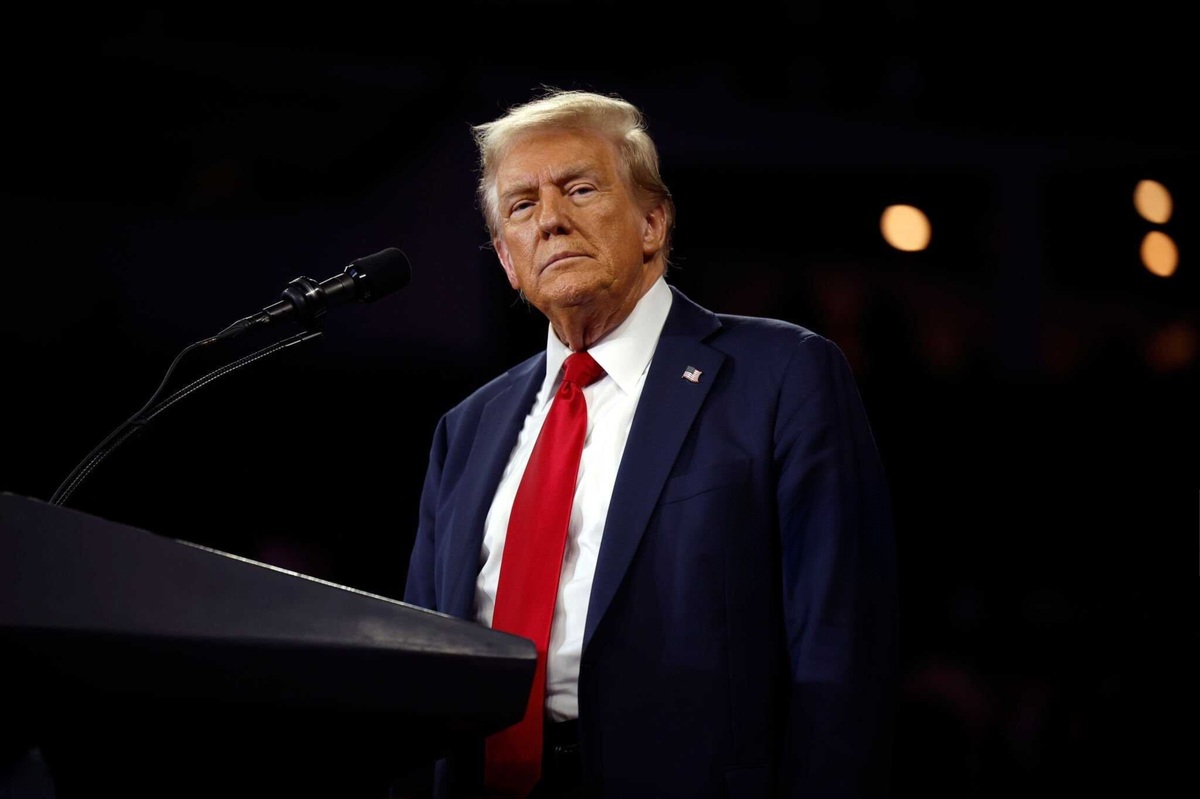Since his election campaign kicked off, U.S. President Donald Trump has pledged a slew of economic policies that would bring down inflation and prices and bolster the U.S. economy. Some of the policies Trump pledged included steep tariffs on America’s largest trading partners including Mexico and Canada.
Trump has already raised economic concerns by calling for restricting immigration and raising import taxes, and recently told global business leaders he would call on the Federal Reserve to cut interest rates.
While Trump’s campaign promised a decline in prices and borrowing costs, restricting immigration and imposing duties on imports from key trade partners is expected to raise inflation levels, impacting prices of essential goods and the trajectory of the Fed’s monetary policy.
Trump to impose tariffs on EU
On Monday, Trump announced that European products will soon be subject to additional tariffs as part of his trade policy, which in recent days has included imposing customs duties on imports from Canada, Mexico and China. The president did not specify a certain timeline for imposing tariffs on the EU but said it will happen soon.
“They’ve really taken advantage of us, you know, we have over $300 billion deficit,” Trump said in a press statement. “They don’t take our cars, they don’t take our farm products. They take almost nothing, and we take everything from the millions of cars, tremendous amounts of food and farm products,” he told reporters.
When asked about the UK, the US president said he enjoyed good relations with British Prime Minister Sir Keir Starmer, and that trade issues with the UK could be worked out. “The UK is out of line. But I’m sure that one, I think that one, can be worked out,” Trump said.
For its part, the European bloc has condemned Trump’s decision to impose tariffs against Canada, Mexico and China, and warned that it will “respond firmly” if it also becomes a target.
20 percent of EU exports land in the U.S.
Trump is threatening to impose tariffs on EU goods to address the U.S’s long-standing trade deficit with the bloc. According to Eurostat, the United States remained the most common destination for goods exported from the EU in 2023 with a share of 20 percent.
Germany was the country with the largest surplus, driven by car and machinery exports, followed by Italy and Ireland. Trump has constantly complained about the EU’s car exports to the US, with fewer vehicles being shipped from the U.S. to the EU.
Following Trump’s comments, London’s FTSE 100 stock index fell more than 1 percent on opening. Volkswagen, BMW, Porsche, and Volvo Cars all fell between 5 and 6 percent. Meanwhile, French car parts supplier Valeo dipped 8 percent.
Tariffs are a major factor in Trump’s economic policy. He sees them as a tool to grow the U.S. economy, protect jobs and raise tax revenue.

Canada, Mexico and China hit with tarrifs
Trump signed three separate executive orders on Saturday, imposing 25 percent on goods from Canada and Mexico, and 10 percent on all imports from China. However, energy products imported from Canada, including oil, natural gas and electricity, would be taxed at 10 percent.
Trump invoked the International Emergency Economic Powers Act (IEEPA) to impose the taxes, accusing the countries of not doing enough to stop illegal immigration and drug trafficking into the United States. The tariffs aim to hold them “accountable to their promises of halting illegal immigration and stopping poisonous fentanyl and other drugs from flowing into our country,” the White House said in a statement.
Tariff collections are set to begin at 05:01 GMT on Tuesday, according to Trump’s written order. Following the order, the White House said the levies would stay in place “until the crisis is alleviated”. White House officials told reporters that there would be no exclusions from the tariffs and if Canada, Mexico or China retaliated against U.S. exports, Trump would likely increase the duties.
78 percent of Canada’s exports go to the U.S.
Trump’s tariffs on Canada and Mexico are expected to hit the two countries hard since trade makes up 70 percent of both economies’ GDP, according to Comtrade, the UN Commodity Trade Statistics Database.
According to the database, 78 percent of Canada’s exports go to the U.S., as does 80 percent of Mexico’s exports. In contrast, the US imports only 14 and 15 percent of its total imports from Canada and Mexico, respectively. This leaves the U.S. with many other trading partners and options for imports, giving it significant leverage over its North American neighbors.
According to the office of the US Trade Representative, the U.S. imported $3.2 trillion worth of goods in 2022, making it the world’s largest importer of goods. The biggest share came from China, at $536.3 billion, representing 14.6 percent of all U.S. imports. Following closely were Mexico at $454.8 billion and Canada at $436.6 billion. Canada, China and Mexico were also the three biggest purchasers of U.S. exports in 2022, according to the Trade Representative.

Trade partners retaliate
Following Trump’s decision to impose tariffs on Canada, Mexico and China, leaders from the three countries pledged to retaliate:
China pledges countermeasures
China’s Foreign Ministry said that Beijing firmly opposed the 10 percent tariff on Chinese exports and pledged countermeasures.
“China’s position is firm and consistent. Trade and tariff wars have no winners. The U.S.’s unilateral tariff hikes severely violate WTO rules. This move cannot solve the US’s problems at home and more importantly, does not benefit either side, still less the world,” the ministry said.
In a statement, the ministry added that Beijing would file a lawsuit at the World Trade Organization, arguing that the unilateral imposition of tariffs by the U.S. seriously violates WTO rules.
Mexico to enact “plan B”
Meanwhile, Claudia Sheinbaum, the Mexican president, opened her statement by saying: “We categorically reject the White House’s slander against the Mexican government of having alliances with criminal organizations.”
Commenting on the purpose of these tariffs, which according to Trump are to curb the issue of the overdoses of fentanyl in the U.S. and its quantity reaching the U.S. border, Sheinbaum added this was not going to be achieved by applying unilateral tariffs on Mexico. She also asked her economy minister to enact “plan B”, the Mexican response to these tariffs.
Sheinbaum previously said that Mexico was prepared and that it had a plan to enact and talk about once the tariffs were official.
Canada to slap tariffs on U.S. goods
As for Canada, Prime Minister Justin Trudeau told a news conference he was slapping tariffs on U.S. goods worth 155 billion Canadian dollars. Canada previously said it would retaliate against the new U.S. administration’s tariffs with 25 percent levies on several U.S. imports.
Tariffs on goods worth 30 billion Canadian dollars will take effect on Tuesday when Trump’s measures are expected to come into effect. Duties on the remaining goods will be imposed in 21 days, according to Trudeau.
What are tariffs?
Tariffs are taxes that are charged on goods imported from other countries. The charges are used as a tool to protect domestic industries from foreign competition. Increasing the price of imported goods seeks to encourage consumers to buy cheaper domestic products to help boost their own economy’s growth.
Tariffs are usually set as a percentage of the value of the goods and in general, the importer pays it. Importing companies are the ones who pay tariffs, and this money goes to the Treasury. Those companies typically pass their higher costs on to their customers in the form of higher prices.
As a result, analysts expect inflation in the U.S. to increase following the new tariff policies.
Commenting on the tariffs’ impact on economic conditions, Trump told reporters: “We may have short term some little pain, and people understand that. But long term, the United States has been ripped off by virtually every country in the world.”








